Growing a square-foot garden is one of the best ways to maximize your garden harvest and get the most out of a small space. This innovative gardening technique was developed by Mel Bartholomew in 1981, and it has grown in popularity since because of its simplicity and convenience.
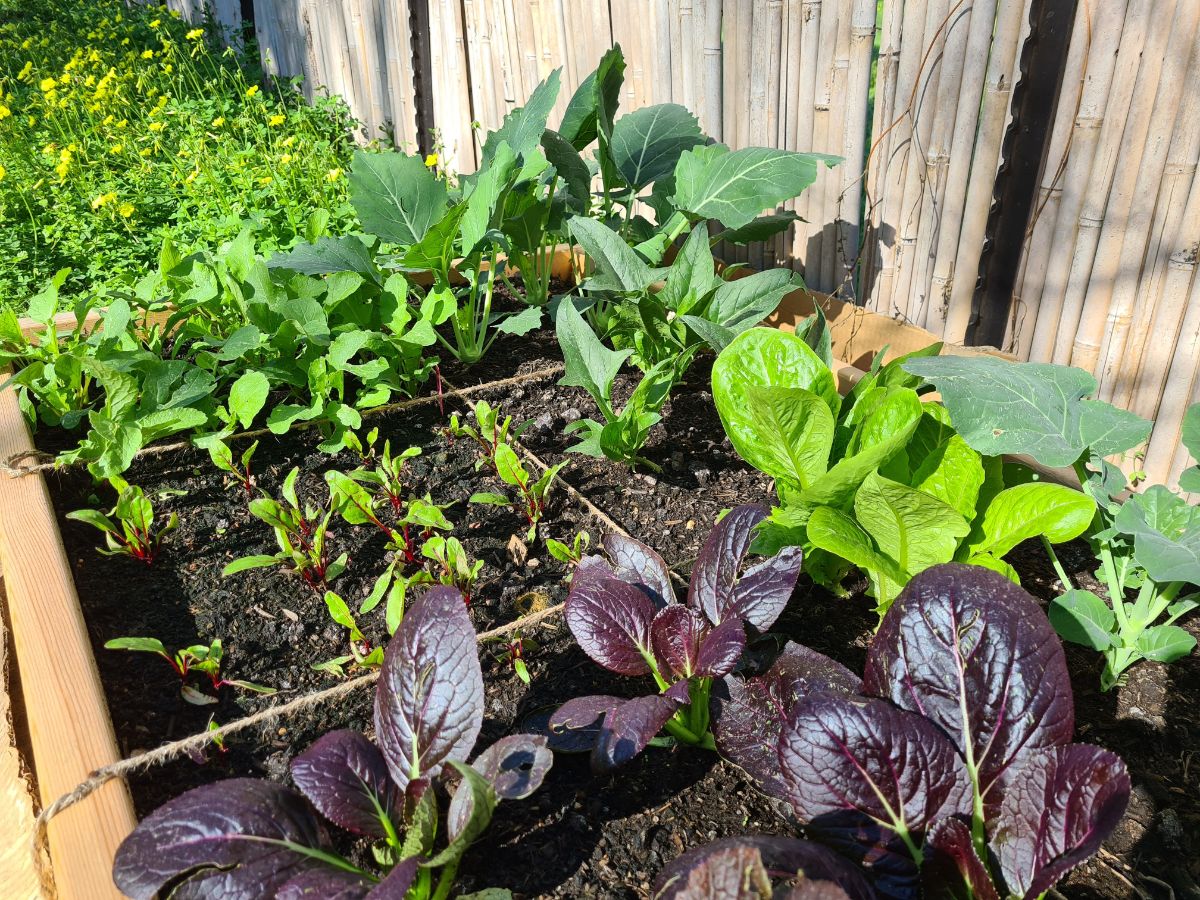
Square-foot gardens can be as small as 4’ by 4’ in size. Those garden spaces are divided into 1’ square areas, which are then sown with vegetables or fruiting plants. While you can grow a wide variety of plants in this type of garden, you will get a larger harvest by growing compact plants that produce high yields of fruit and vegetables.
To get you started with your own square-foot garden, we’ve listed some of the most productive and small space-friendly plants in the guide below. We’ve also included plant spacing tips, so you’ll know exactly how many carrots, tomatoes, and other vegetables you can grow in a single square foot!
Jump to:
21 vegetables to get the most out of your square-foot garden
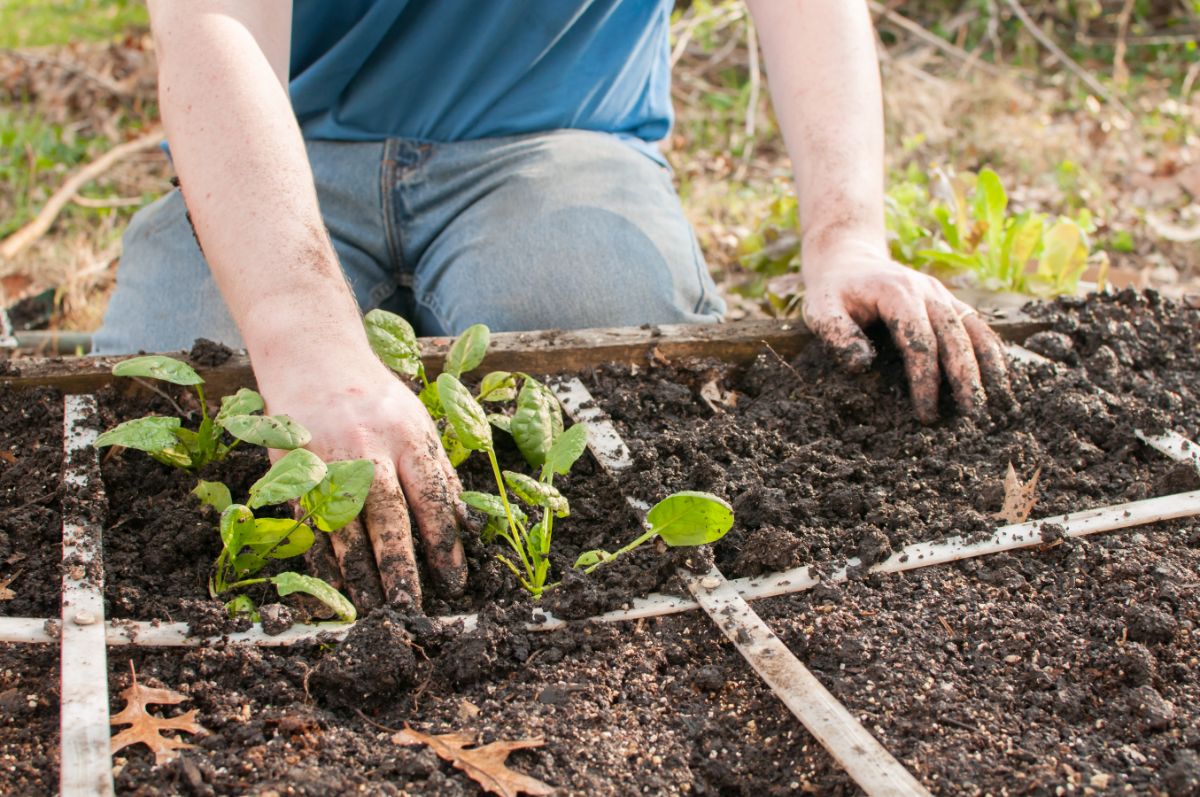
In square-foot gardens, plants are mostly divided by size. Carrots, for instance, are considered ‘small’ plants because you can fit a lot of them in a single square. Tomatoes, on the other hand, are ‘large plants’, and each tomato plant should be given a square foot of growing space.
In the list below, you’ll find some of the top plants to grow in square-foot gardens to maximize your harvest yield. ‘Extra large’ plants, like pumpkins, are generally not recommended for square-foot gardens since they spread so much. However, if you really want to grow pumpkins, you can sow some in containers near your square-foot garden and train their sprawling vines to grow away from your garden bed.
1. Carrot
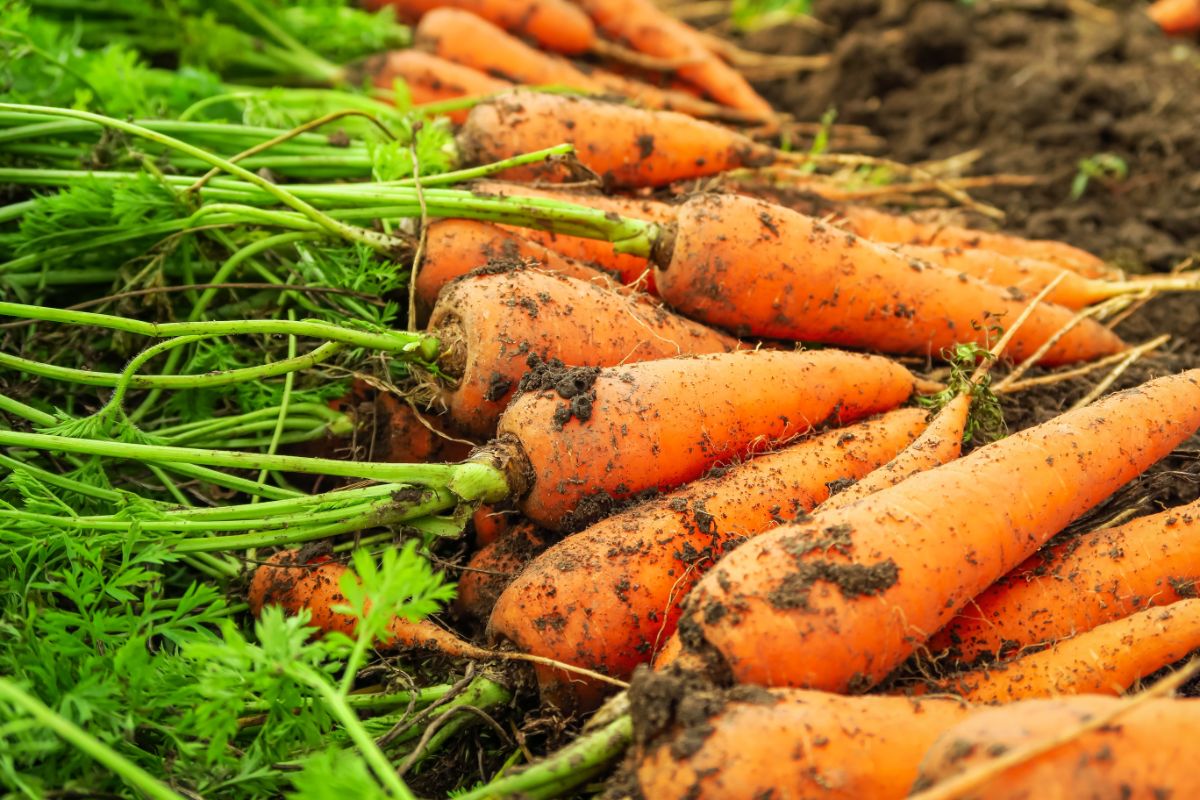
| Plant name: | Carrot |
| Recommended growing season: | Spring, Fall |
| Plants per square foot: | 16 |
Carrots grow compactly, and they don’t spread. While cramped conditions can produce malformed or stunted roots, if you provide carrots with about 3” of growing space, they should grow quite well. That means that, in a square-foot garden, you can grow about 16 carrots in a single square foot of growing space.
Since carrots are relatively cold-hardy, they are some of the first plants you can sow in spring and the last crops of autumn too! If you want, you can plant your entire garden with carrots in spring and then swap out some of the growing squares with other veggies when the temperature warms. To further boost your carrot crop, succession plant carrot seeds every few weeks throughout the growing season, so you always have delicious, fresh carrots on hand!
2. Tomato
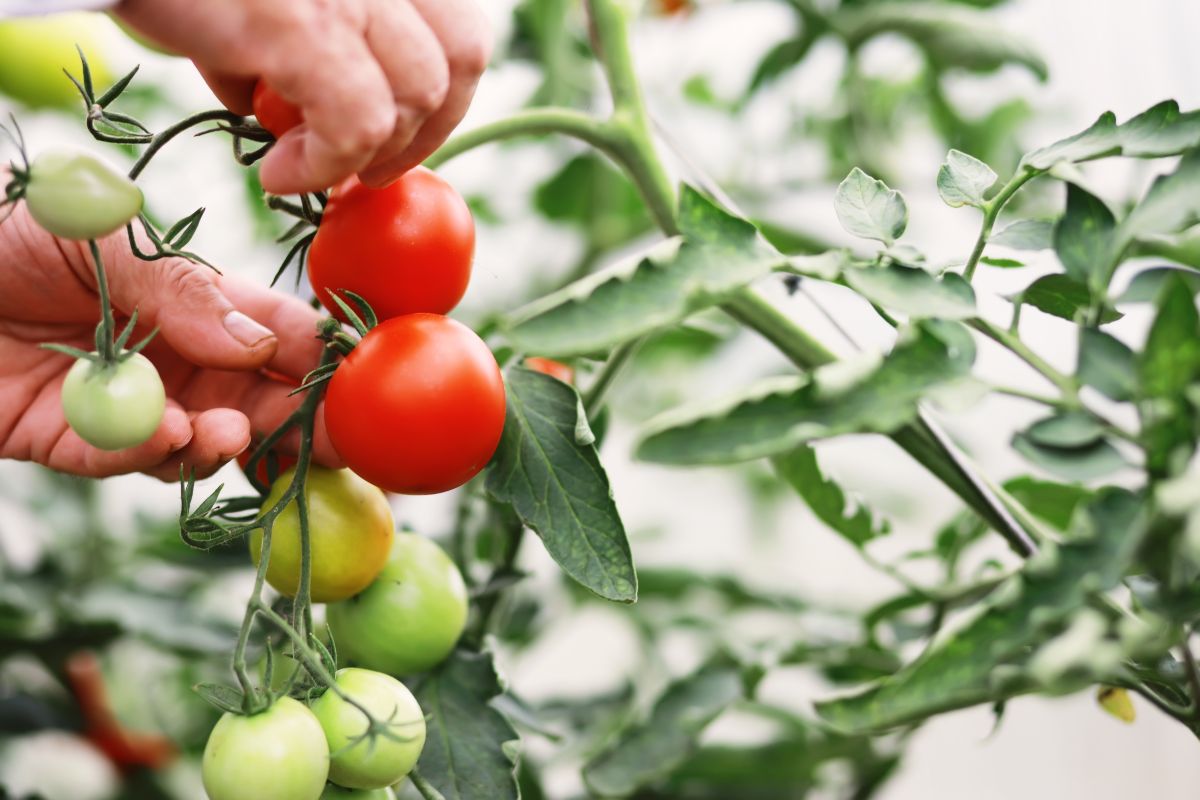
| Plant name: | Tomato |
| Recommended growing season: | Late spring through early fall |
| Plants per square foot: | 1 indeterminate plant |
Tomatoes are larger plants, so you can’t fit as many of them into a square-foot garden. However, if you choose the right tomato plants, you can still grow a healthy harvest of juicy tomatoes for salads or canning.
Indeterminate tomato varieties are recommended for square-foot gardens, while determinate tomatoes are better for container planting. This is because indeterminate tomatoes grow vertically and can be kept more compact with trellising and regular pruning. In a square-foot garden, sow 1 indeterminate tomato per planting square, and be sure to keep it well-fertilized, so it doesn’t steal nutrients from plants grown nearby.
3. Pepper
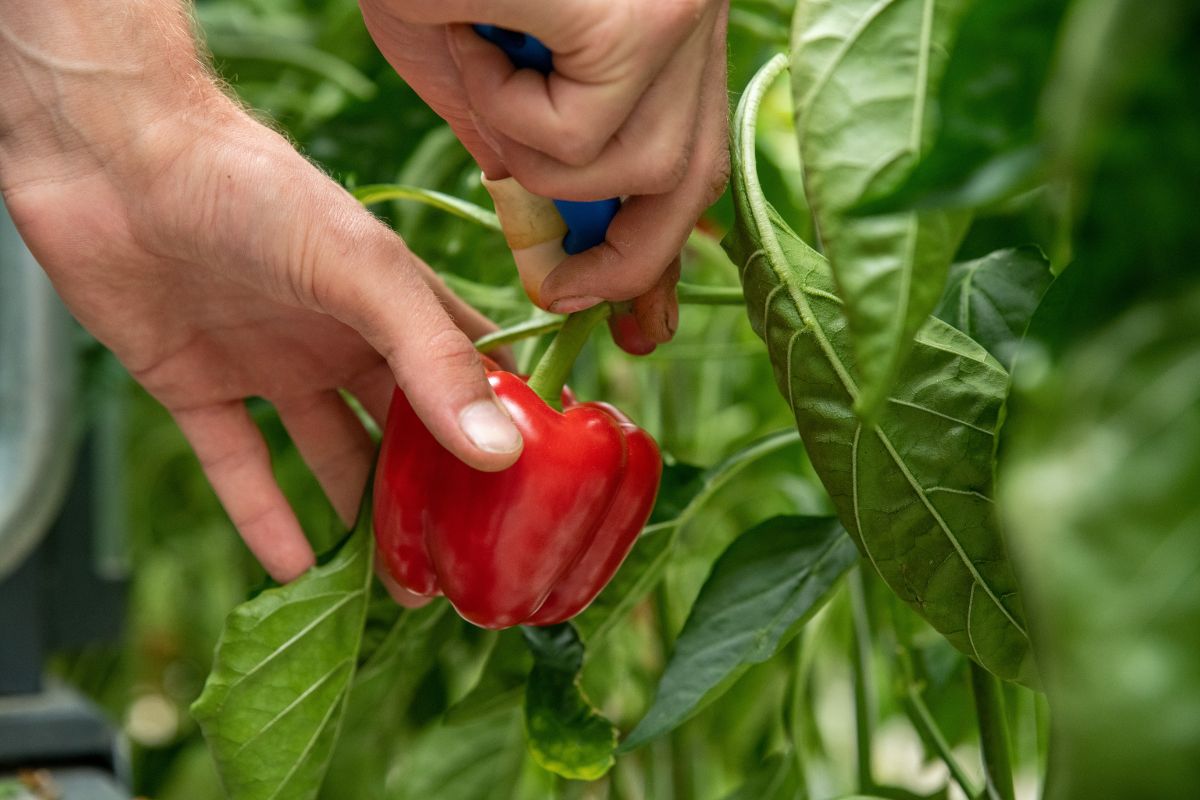
| Plant name: | Pepper |
| Recommended growing season: | Late spring through fall |
| Plants per square foot: | 1 |
Like tomatoes, peppers are relatively large plants. In a square-foot garden, a single bell or hot pepper plant will require a square foot of space all to itself. That said, peppers can grow prolifically and continue to produce fruit well into autumn, so you’ll still be able to get a healthy harvest of peppers out of a single plant.
If you want to boost your pepper yield, provide your plants with plenty of low-nitrogen fertilizer. It’s also a good idea to get into the habit of regularly picking your peppers, as frequent harvesting will encourage your plants to produce more fruit.
4. Radish

| Plant name: | Radish |
| Recommended growing season: | Spring, Fall |
| Plants per square foot: | 16 |
Radishes are another cold-hardy plant, and they grow well in spring and fall. That makes radishes one of the top plants to grow in early spring gardens, as seeds can be directly sown outdoors as soon as the soil is workable.
Compact radish plants can be sowed closely together, and you can fit 16 plants per square foot of gardening space. Additionally, since radishes grow so fast, they work exceptionally well for succession planting. If you’re looking for fun radish varieties to try, look for ‘Easter Egg’ radishes, which are sure to delight you with their pretty, pastel colors!
5. Lettuce
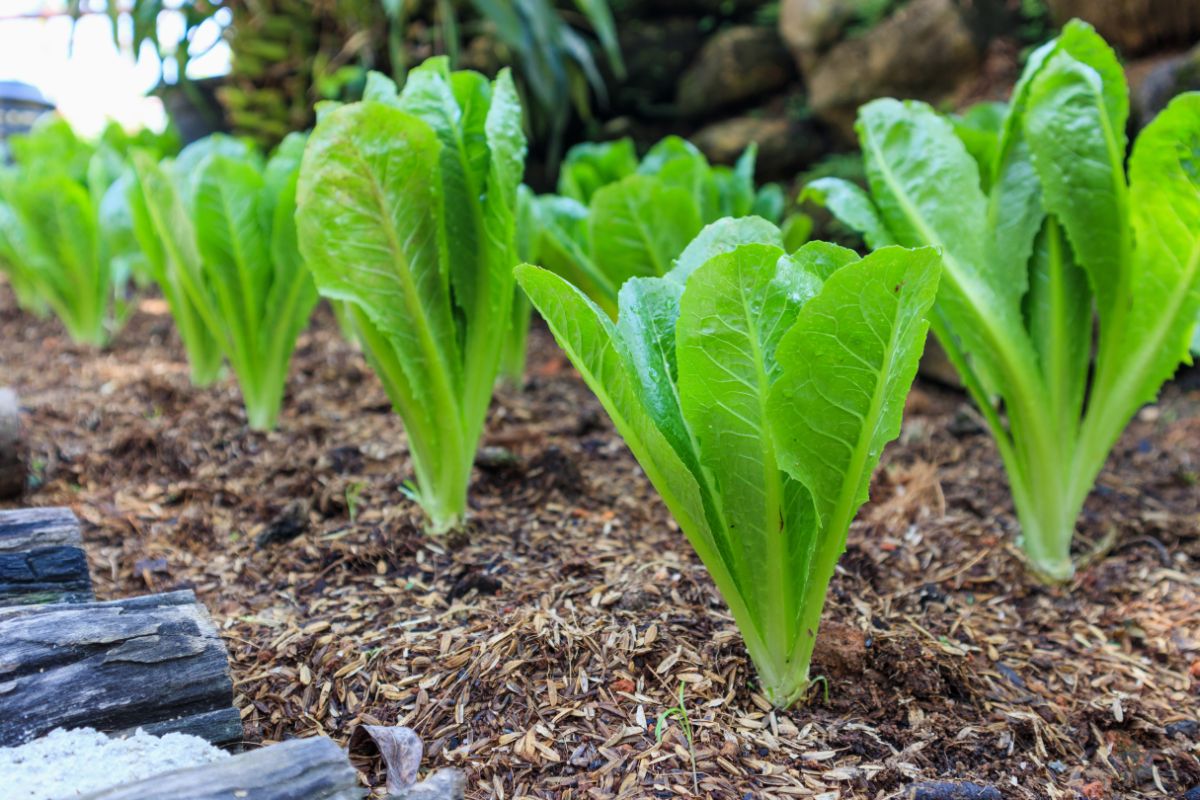
| Plant name: | Lettuce |
| Recommended growing season: | Spring, Fall |
| Plants per square foot: | 2 to 6, depending on the lettuce variety |
Lettuce is generally divided into two main categories: heading lettuce and leaf lettuce. Heading lettuce types, like romaine, take longer to grow, and they require more space than leaf lettuce varieties. For best growth, you can fit 2 heading lettuce plants, 3 small heading lettuce plants (like bibb lettuce), or 6 leaf lettuce plants in a square foot.
Lettuce prefers cool temperatures and lots of moisture, making it well-suited for spring and autumn gardens. You can also use companion plants in your square-foot garden to extend your lettuce harvesting season. For instance, locating your lettuce plants near taller tomatoes or eggplants can provide a bit of natural shade to your lettuce and slow down its bolting.
6. Onion
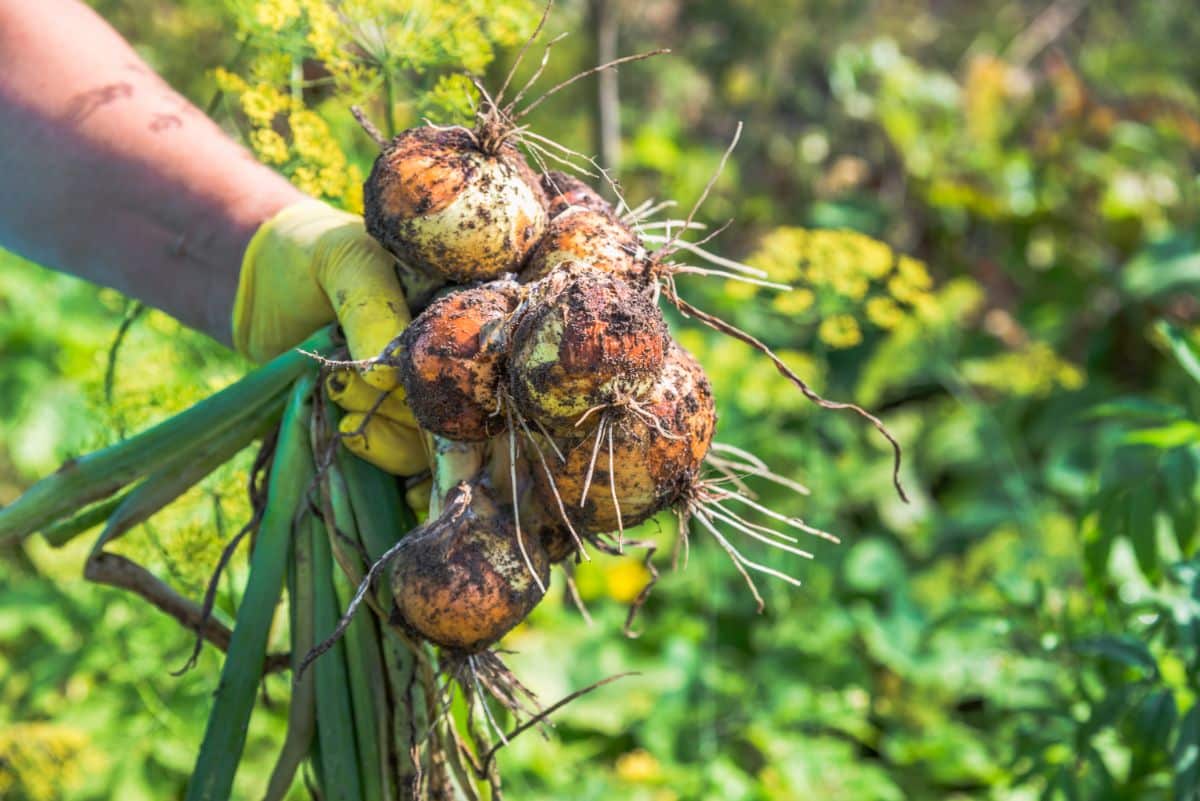
| Plant name: | Onion |
| Recommended growing season: | Spring through fall |
| Plants per square foot: | 9 bulbing onions or 16 green onions |
Onions will also work in square-foot gardens, and how many you can fit per square will depend on the type you’re growing. About 9 bulbing onions can grow in a single square, while you can sow 16 green onions per square foot. Due to the compact spacing, your bulbing onions may grow a bit smaller than grocery store varieties, but you’ll still get an impressive harvest out of your small garden.
One of the best reasons to keep onions in your square-foot garden is that onions and other alliums are some of the top companion plants for natural pest control. These impressive plants naturally repel many garden pests, and they can even keep deer from browsing in your garden. To get the most out of your onions, try sowing them around the perimeter of your square-foot garden to keep pests away.
7. Cucumber
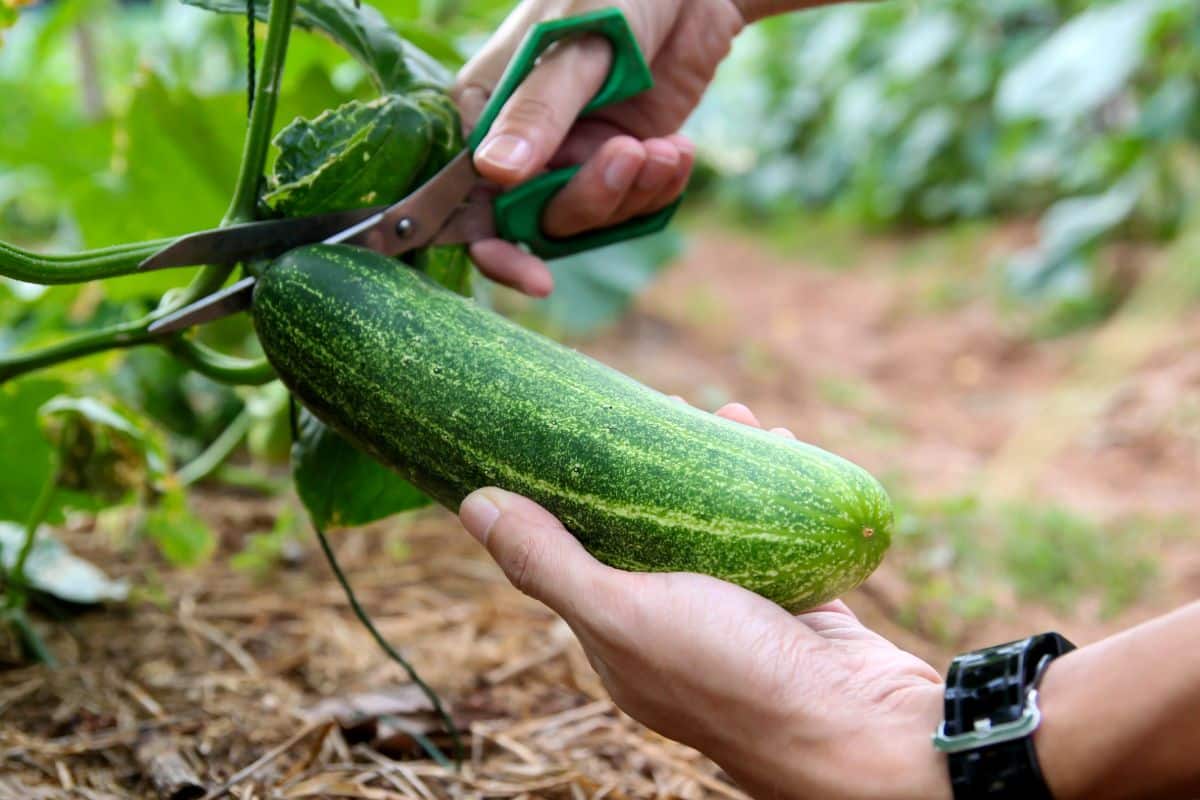
| Plant name: | Cucumber |
| Recommended growing season: | Spring through summer |
| Plants per square foot: | 2 vining plants |
One easy way to get more vegetables out of your square-foot garden is to grow vertically, and cucumbers help you do just that! Vining cucumber varieties can be trained to grow up poles or trellises, leaving the soil below open and available for other low-growing plants. Just be sure when you’re selecting your cucumbers to choose vining types, as bush cucumbers produce more leafy growth and are better suited for containers.
It’s always important to consider the location of the sun when placing your plants, and this is especially true for cucumbers. Taller vining plants should be located towards the rear (or north side) of your garden so they won’t block out the light, while shorter vegetables should be positioned towards the front of your garden. Trellis netting, growing towers, and tomato cages can all provide exceptional support to your vining cucumbers, and they’ll fit well in cramped quarters too!
8. Potato
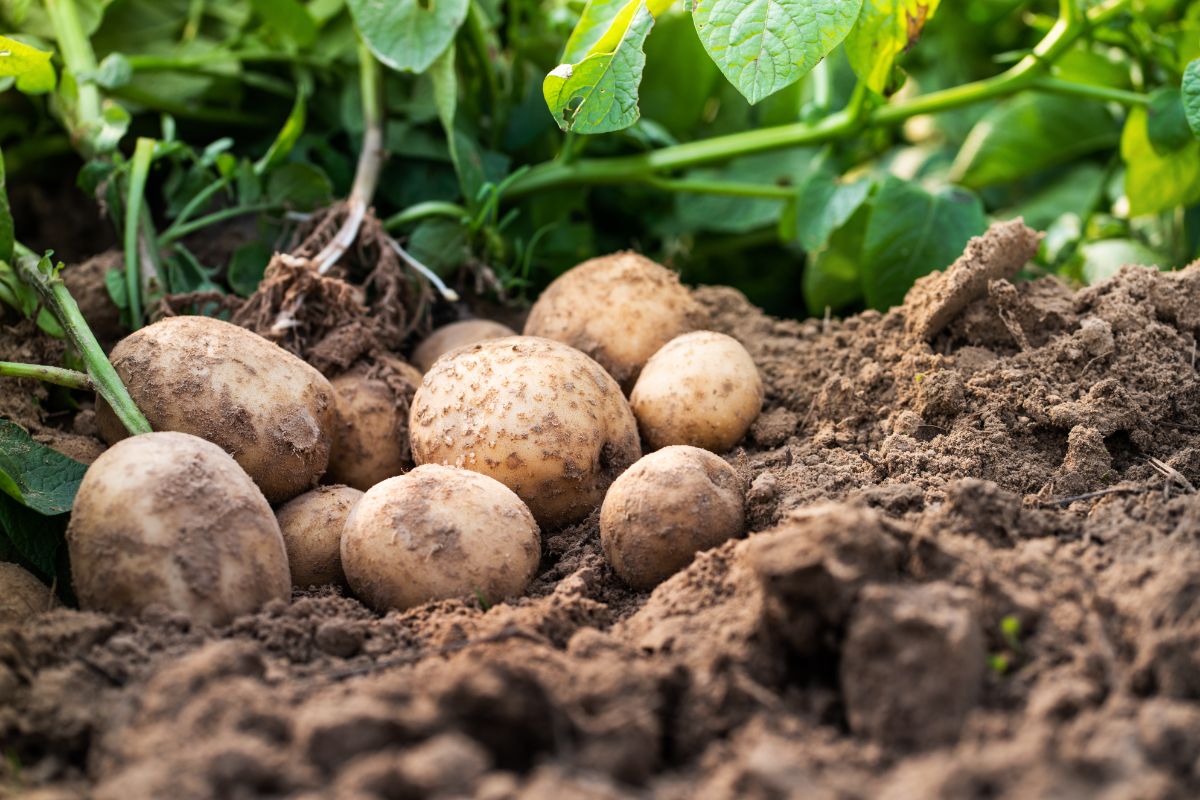
| Plant name: | Potato |
| Recommended growing season: | Spring through fall |
| Plants per square foot: | 1 to 4 |
How much-growing space a potato plant has will determine the size and number of tubers that the plant produces. In a square-foot garden, you can plant either 1, 2, or 4 potatoes per planting square; however, if you plant 4 potatoes per square, those plants will produce smaller spuds. Smaller potato types, like new potatoes and fingerling potatoes, will also produce more potatoes per square foot than larger or russet potato plants.
Since potatoes are heavy-feeding plants, it’s critical that you amend your soil with compost or aged manure prior to planting. Throughout the growing season, it’s also wise to fertilize your potatoes about once a month. This will ensure your plants produce plenty of spuds and will keep your potatoes from robbing nearby plants of the nutrients they need.
9. Broccoli
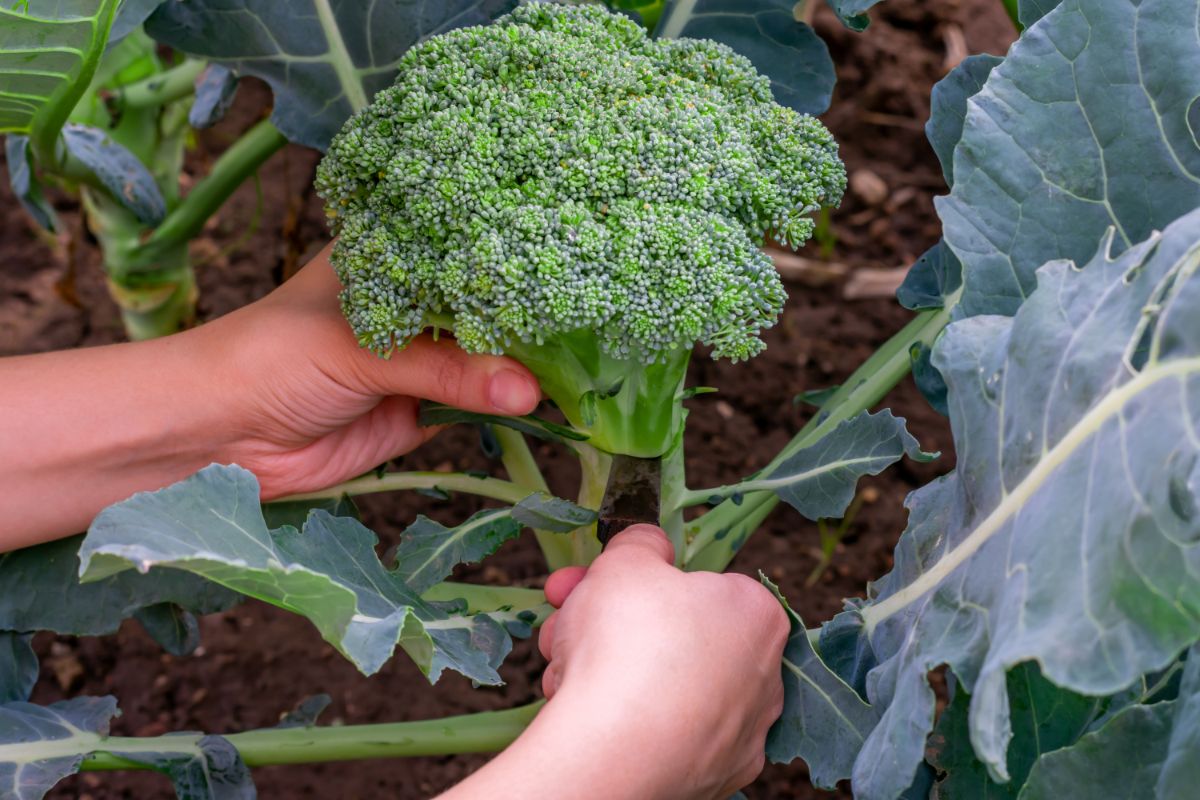
| Plant name: | Broccoli |
| Recommended growing season: | Spring, Fall |
| Plants per square foot: | 1 |
Broccoli, cauliflower, and Brussels sprouts can all be grown in square-foot gardens, but they require a single square foot each to grow properly. Since these plants are so large, they may not be the best use for your small garden, but if you love these veggies, by all means, grow them! They can also be a good solution for autumn gardens, as these cool-weather plants will grow long after you’ve pulled heat-loving tomatoes and peppers from your beds.
Broccoli and other cruciferous vegetables are very prone to pest attacks, but planting them near onions and other alliums can repel many of their most common foes. Alternatively, since square-foot gardens are so small, it’s often quite easy to cover up the entire garden with floating row covers, which will protect your veggies from cabbage loopers and other troublesome insects.
10. Beets
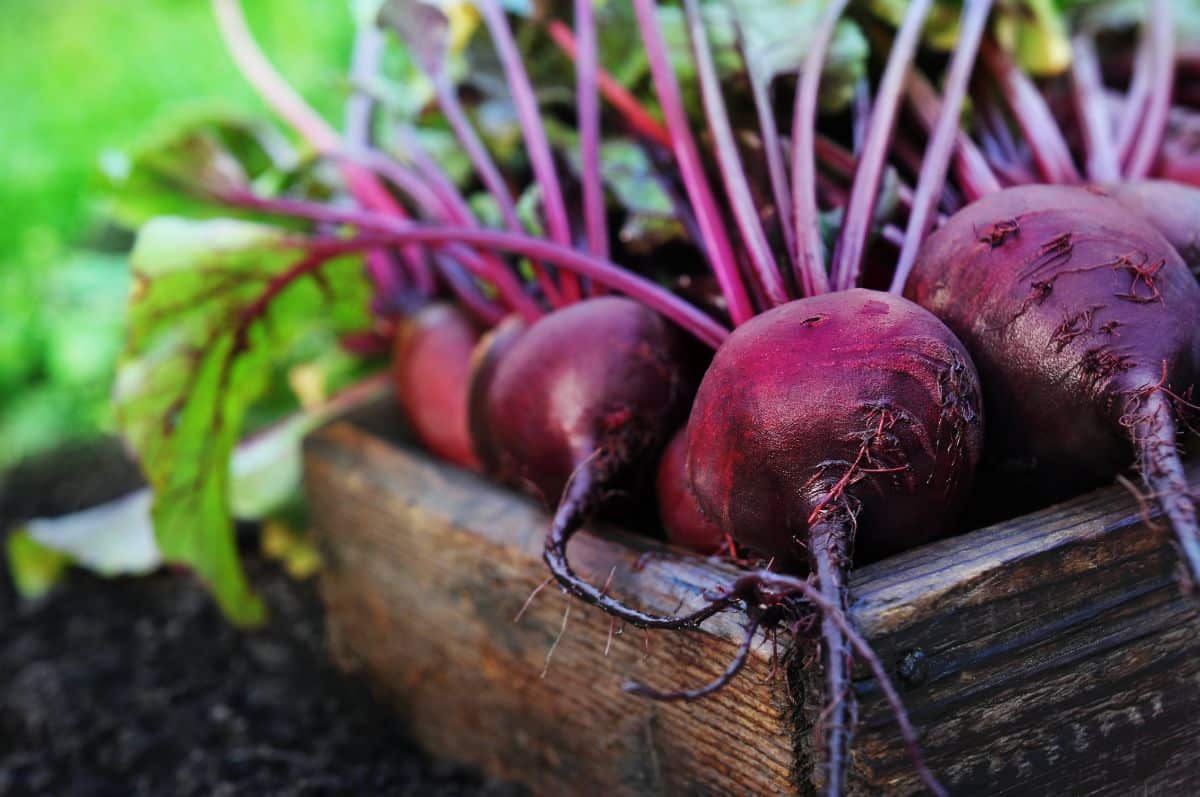
| Plant name: | Beets |
| Recommended growing season: | Spring, Fall |
| Plants per square foot: | 9 |
You can sow 9 beet plants per square foot, which will allow you to pack a lot of plants into your small garden. Cold-hardy and fast-growing, beets are a good choice for spring and autumn beds, and they’re also ideal for succession sowing. While red beets are the most common, you can try out golden, rainbow, or white beets instead or, for even more variety and color, try sowing a mix of different beet types.
While most gardeners grow beets for their roots, beet greens are also tasty and nutritious, and they can be used just like spinach or kale. Using all parts of your beet plant will stretch your garden harvest even further and make sure nothing goes to waste!
11. Eggplant
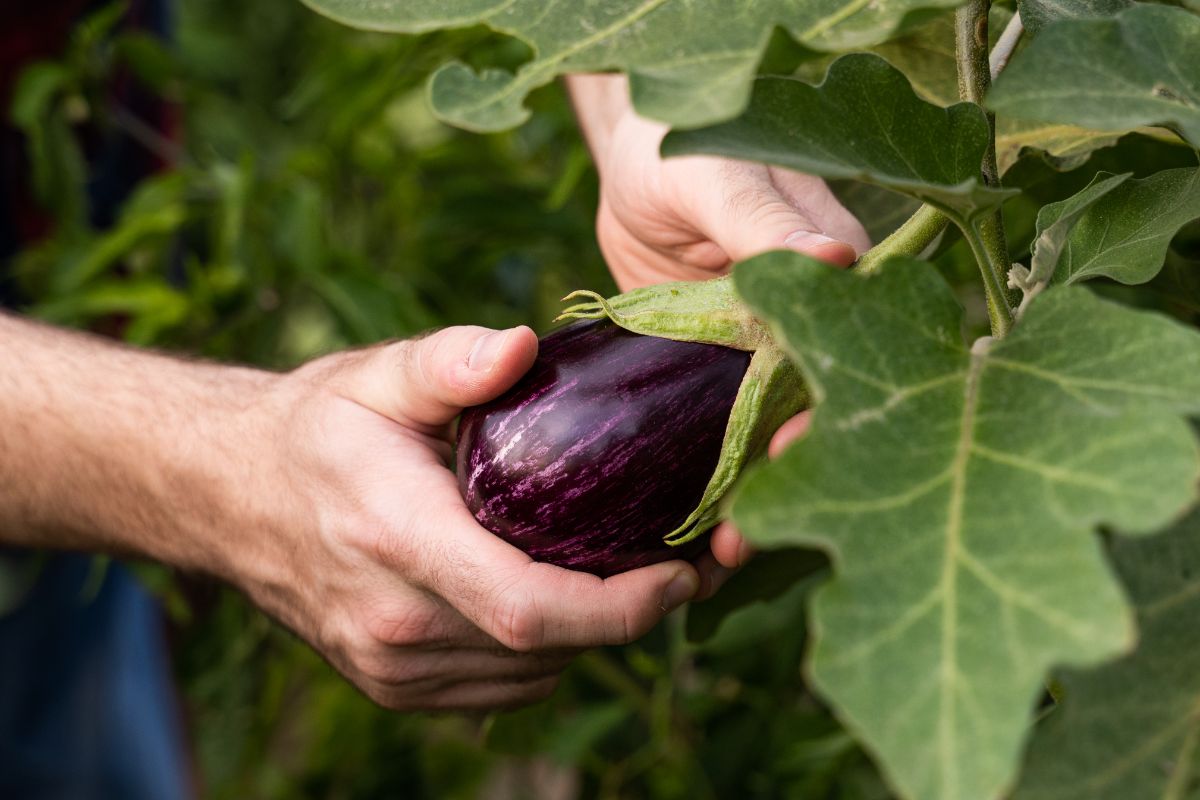
| Plant name: | Eggplant |
| Recommended growing season: | Late spring through early fall |
| Plants per square foot: | 1 |
Since eggplants are classified as ‘large’ plants in square-foot gardens, you can only grow one per square. However, a single plant will produce about 4 to 6 eggplants, so you may just need a plant or two to provide enough for your family.
Eggplants are members of the nightshade family, which also includes tomatoes and peppers. Since these plants are closely related, you may want to space these plants apart or add some companion plants to keep pests away naturally. Some of the best companions for nightshade plants include onions, garlic, and strong-smelling herbs.
12. Leafy Greens
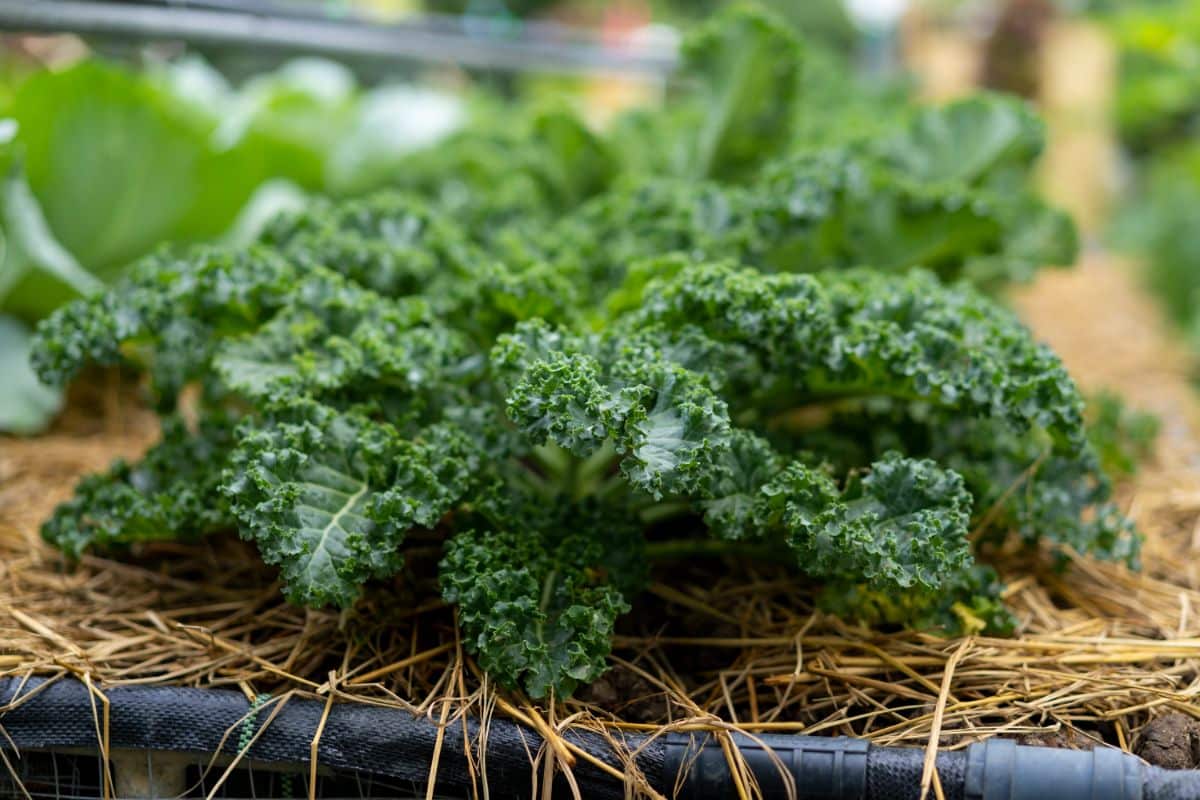
| Plant name: | Leafy Greens |
| Recommended growing season: | Spring through winter, depending on the variety |
| Plants per square foot: | 1 to 4, depending on the variety; can sow 9 plants per square for baby greens |
Due to their rapid growth and compact size, leafy greens are top choices for small space gardens. That means that plants like kale, spinach, arugula, collard greens, mizuna, tatsoi, bok choy, and other greens are all appropriate for square-foot gardening, although the number of seeds you’ll need to plant will vary depending on the species you choose to grow.
Larger leafy greens, like kale and collard greens, should be planted singly with just one plant per square. Smaller greens, like spinach, can be planted more tightly together, and about 4 plants can be sown per square. If you prefer baby greens, you can sow up to 9 seeds per square foot, regardless of which plant you’re growing.
Thanks to their cold hardiness, leafy greens may be able to be overwintered outdoors with a bit of added protection. So, if you want to keep gardening in the winter, these can be great plants to try!
13. Garlic
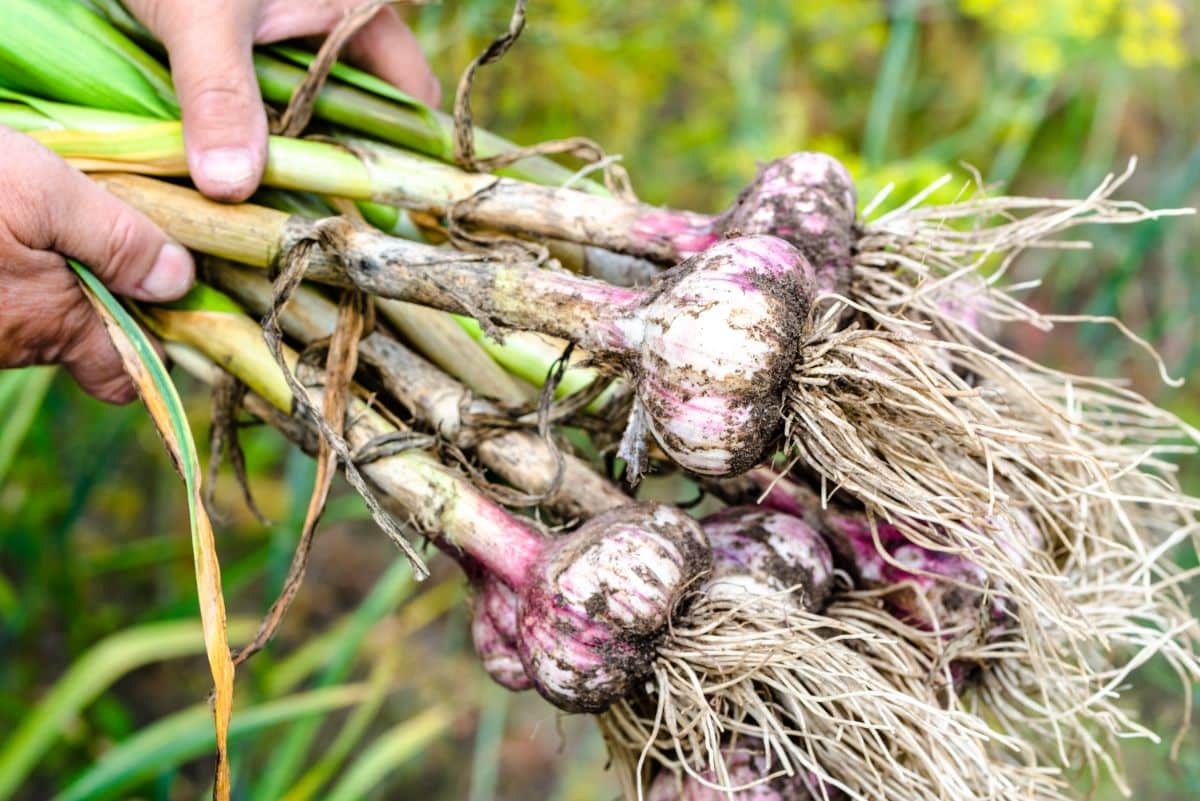
| Plant name: | Garlic |
| Recommended growing season: | Fall through summer |
| Plants per square foot: | 4 to 9 |
Garlic is a fun plant to grow – just plant a few cloves, wait a while and harvest an entire head of spicy and flavorful garlic! In a square foot of garden space, you can fit between 4 to 9 cloves. Plus, while you’re waiting for your garlic to grow, you may be able to harvest garlic scapes for pesto-making and more!
Only hardneck garlic produces scapes, while softneck garlic is perfect for braiding. Whichever garlic variety you grow, be sure to get your cloves in the ground in autumn so your garlic will have plenty of time to mature.
14. Celery
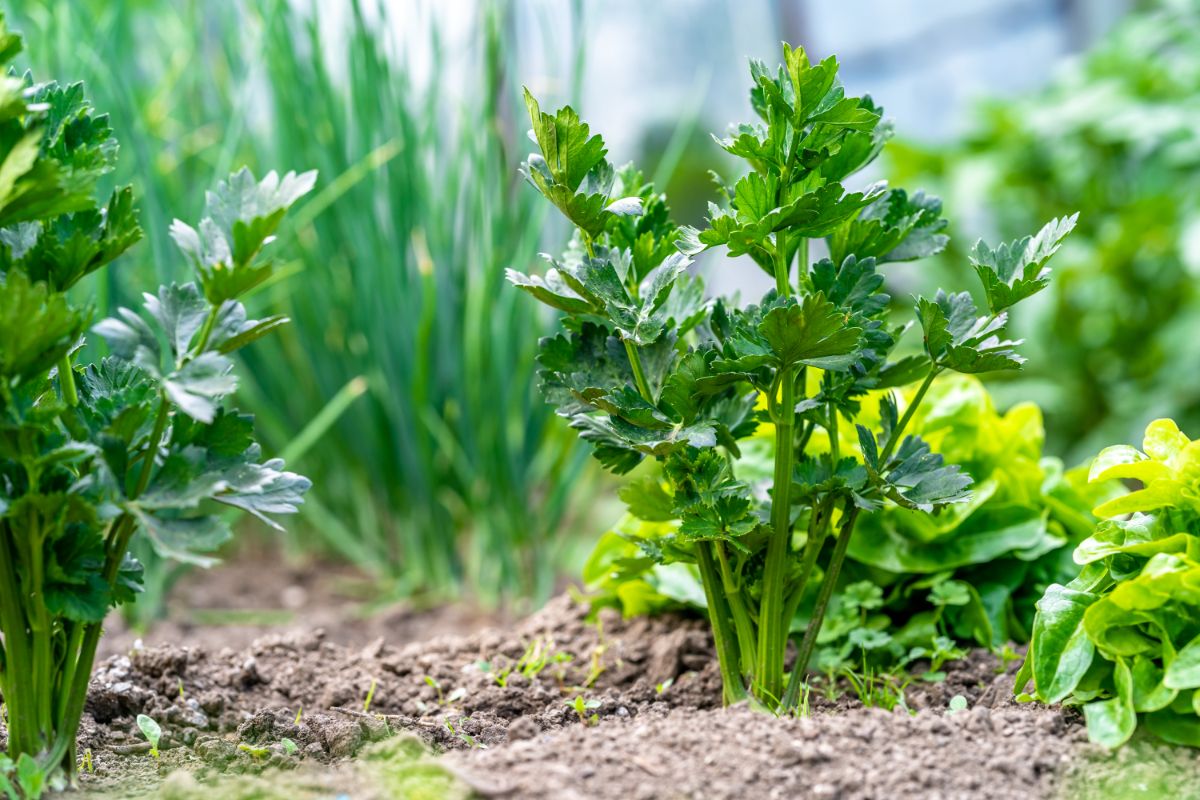
| Plant name: | Celery |
| Recommended growing season: | Spring, Fall |
| Plants per square foot: | 4 |
For that crisp and classic crunch, celery is hard to beat, and you’ll definitely want to leave a bit of space in your square-foot garden for a few of these plants. You can sow about 4 celery plants per square foot, but these plants will need lots of water to make sure their stalks are well-formed and flavorful.
Growing celery can be a bit tricky, especially if you live in a warmer climate. Because it can be a bit easier to grow, some gardeners choose to sow celeriac (also known as celery root) or seasoning celery (aka cutting celery) instead. These hardy plants are a bit more adaptable than standard celery, and they have a similar flavor, but you’ll only be able to fit 2 to 4 plants per square foot.
15. Herbs
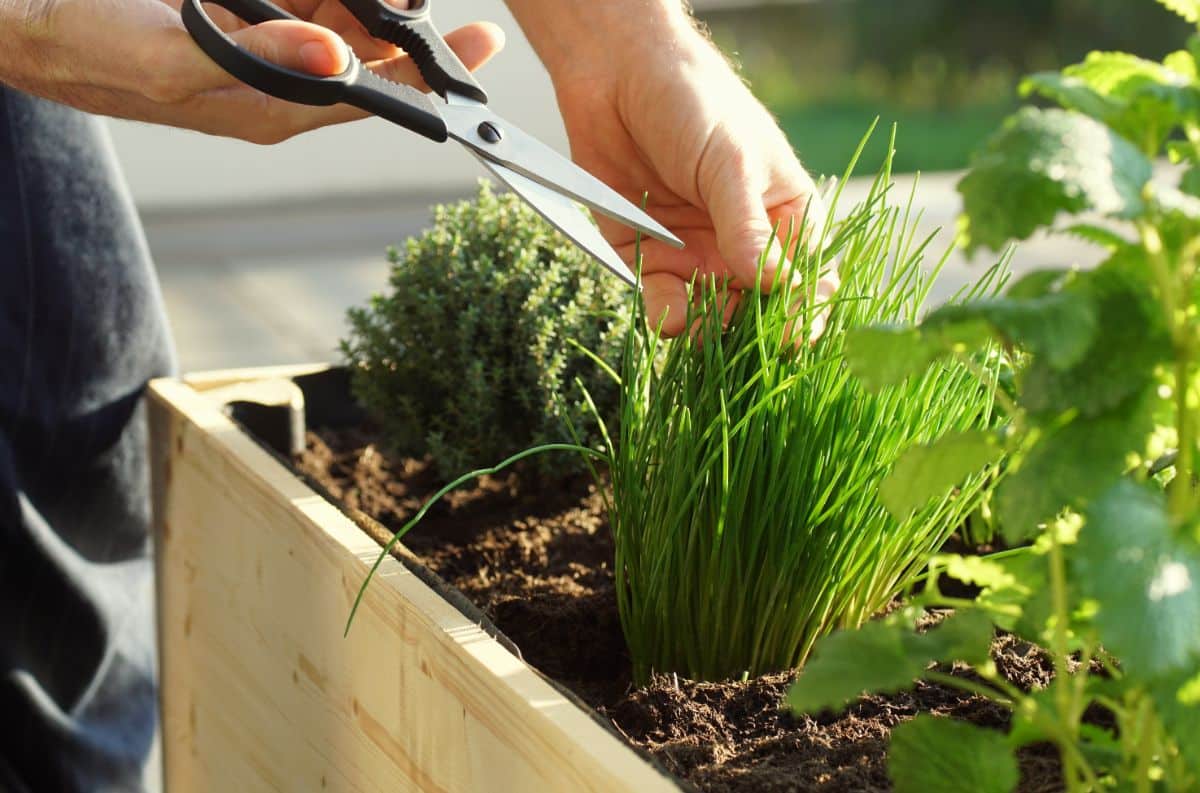
| Plant name: | Herbs |
| Recommended growing season: | Spring through winter, depending on the variety |
| Plants per square foot: | 1 to 4, depending on the variety |
Small and fast-growing herbs are an obvious choice for square-foot gardening, and they are the best plants to grow if you want to save on your weekly grocery budget. Fresh or dried herbs can be some of the priciest produce to purchase per ounce, but growing your own can save you a lot of money and ensure you always have fresh herbs on hand for cooking.
You can sow herbs among your vegetable plants for natural pest control, or you can create a square-foot herb garden planted only with herbs. Some of the best herbs to try to include basil, cilantro, chives, parsley, oregano, and thyme. Sow 4 cilantro or parsley plants per square or 1 basil, oregano, chive, or thyme plant per square.
Note: Rosemary and sage are larger plants and may require 2 or more squares to grow properly. Additionally, since mint is a notorious spreader and will take over small garden spaces, it is better suited for containers than square-foot garden beds.
16. Beans
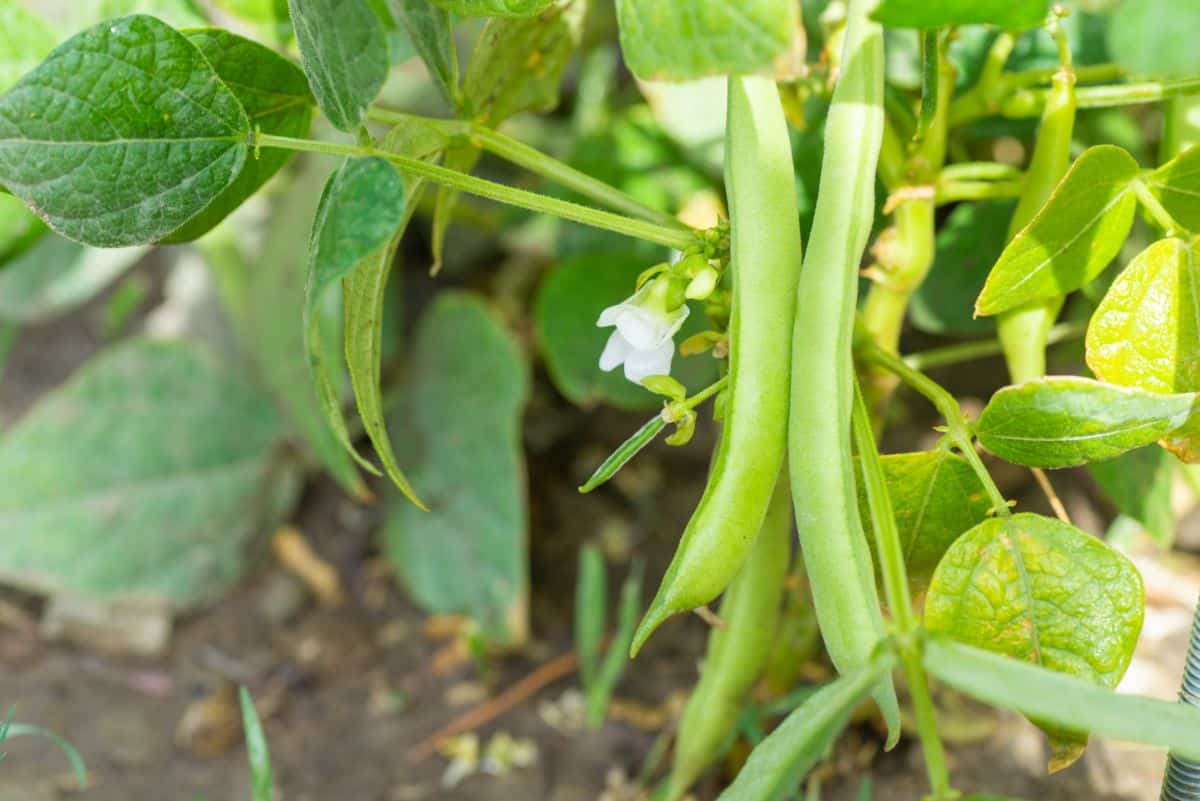
| Plant name: | Beans |
| Recommended growing season: | Spring through summer |
| Plants per square foot: | 9 |
Both bush and pole beans can be planted tightly in square-foot gardens, with about 9 seeds per square foot being ideal. Vining or pole-type beans can be encouraged to grow up trellises or other support poles to provide you with more growing space. Alternatively, bush beans’ compact growth habit means they won’t spread as much.
Small trellises or a few bamboo poles lashed together will provide plenty of support for climbing beans. One of the added benefits of sowing beans in your square-foot garden is that these plants have nitrogen-fixing abilities that allow them to naturally enrich the soil around them.
17. Cabbage
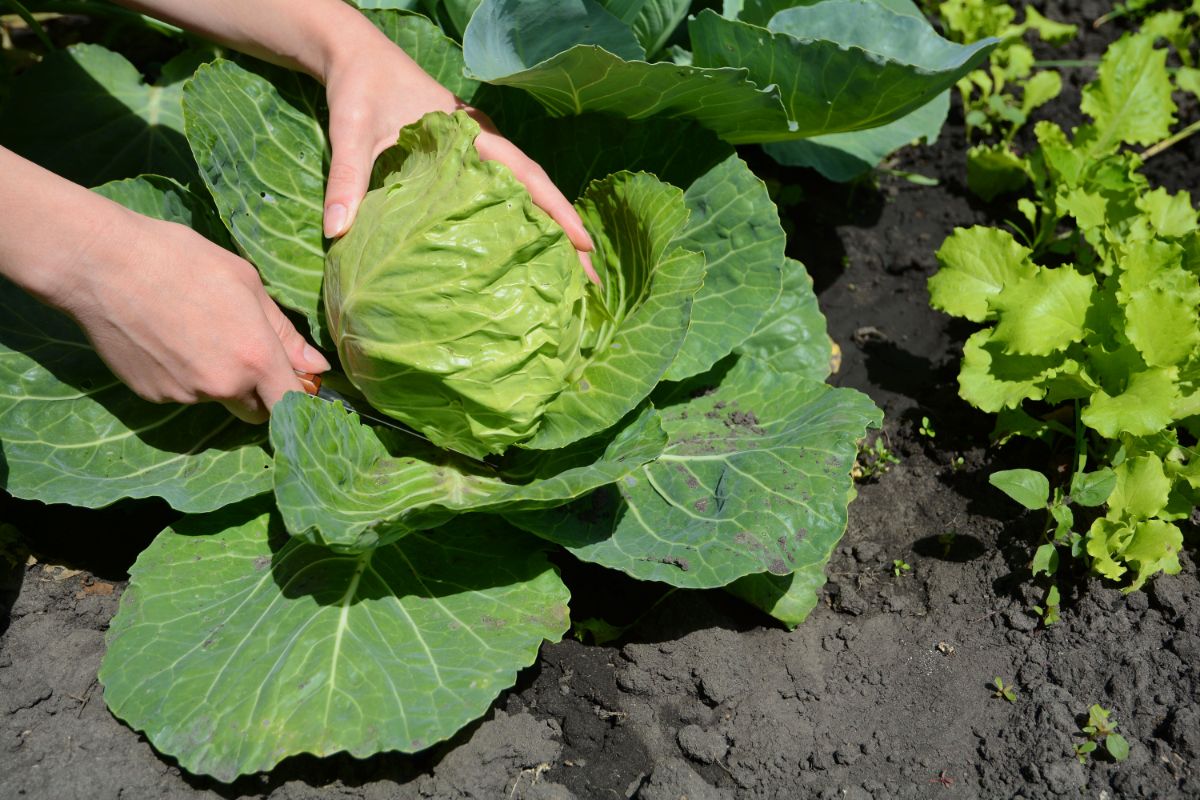
| Plant name: | Cabbage |
| Recommended growing season: | Spring, Fall |
| Plants per square foot: | 1 |
Like broccoli, cabbage is a large plant that needs a lot of nutrients to grow properly. As a result, it can be difficult to keep these plants in square-foot gardens, but it is possible.
Cabbages should be spaced out with 1 plant per square. Providing your cabbage with extra fertilizer throughout the growing season will encourage plants to grow larger and prevent them from depleting the nearby soil. If you love the taste of cabbage but want to pack more plants into your garden, swap out cabbage for faster-growing bok choy (4 plants per square).
18. Parsnip
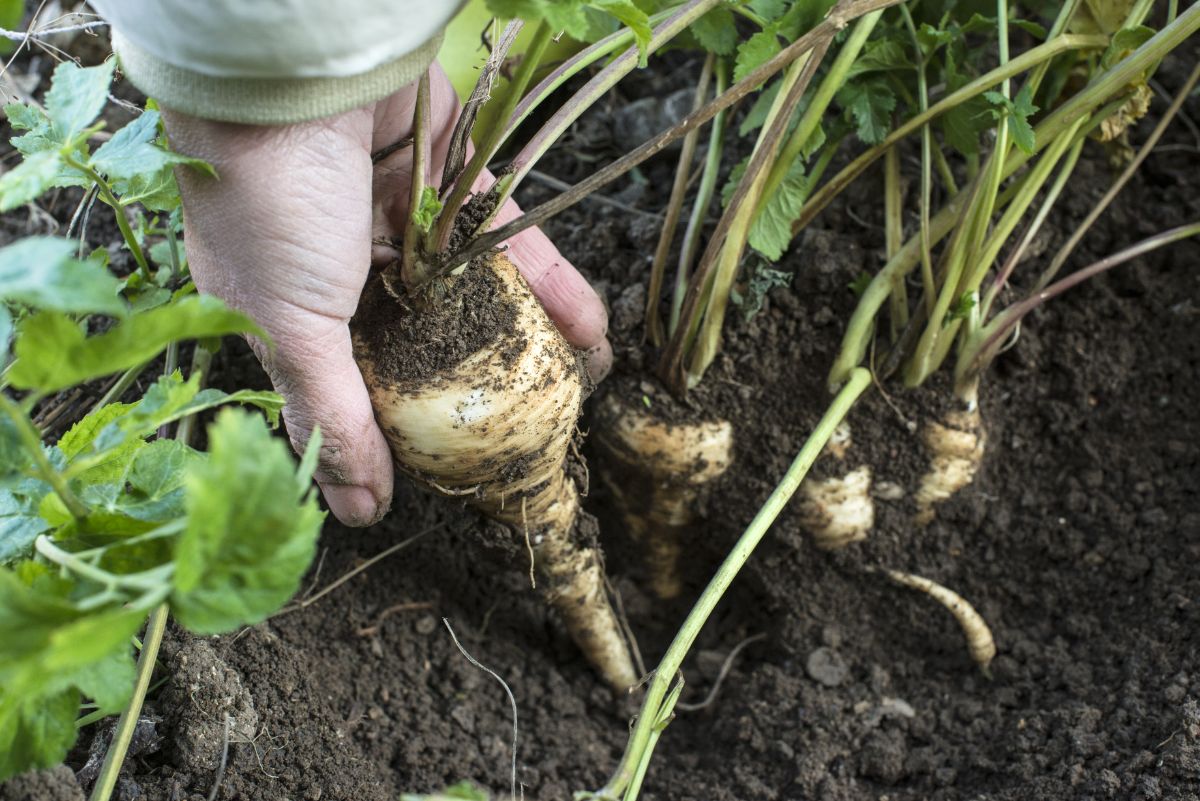
| Plant name: | Parsnip |
| Recommended growing season: | Spring through fall |
| Plants per square foot: | 9 |
Parsnips look a lot like carrots, but they have white flesh and a more aromatic and intensely flavored root. They are also slower to mature and require an entire growing season for properly sized roots.
In the square foot garden, sow 9 parsnip seeds per square.
19. Turnip

| Plant name: | Turnip |
| Recommended growing season: | Spring, Fall |
| Plants per square foot: | 9 |
Another cool season crop, turnips, don’t like the heat very much, and they don’t grow well in summer. However, they are perfect for spring and fall gardens, and they can continue to grow after a light frost, making them some of the most productive plants for autumn beds. Once harvested, turnips can last in root cellars for a month or more!
When planting turnips, sow 9 turnips seeds per square. Since turnips mature rapidly, you can extend your harvest by succession planting your seeds every 2 weeks in spring and late summer to early fall.
20. Okra
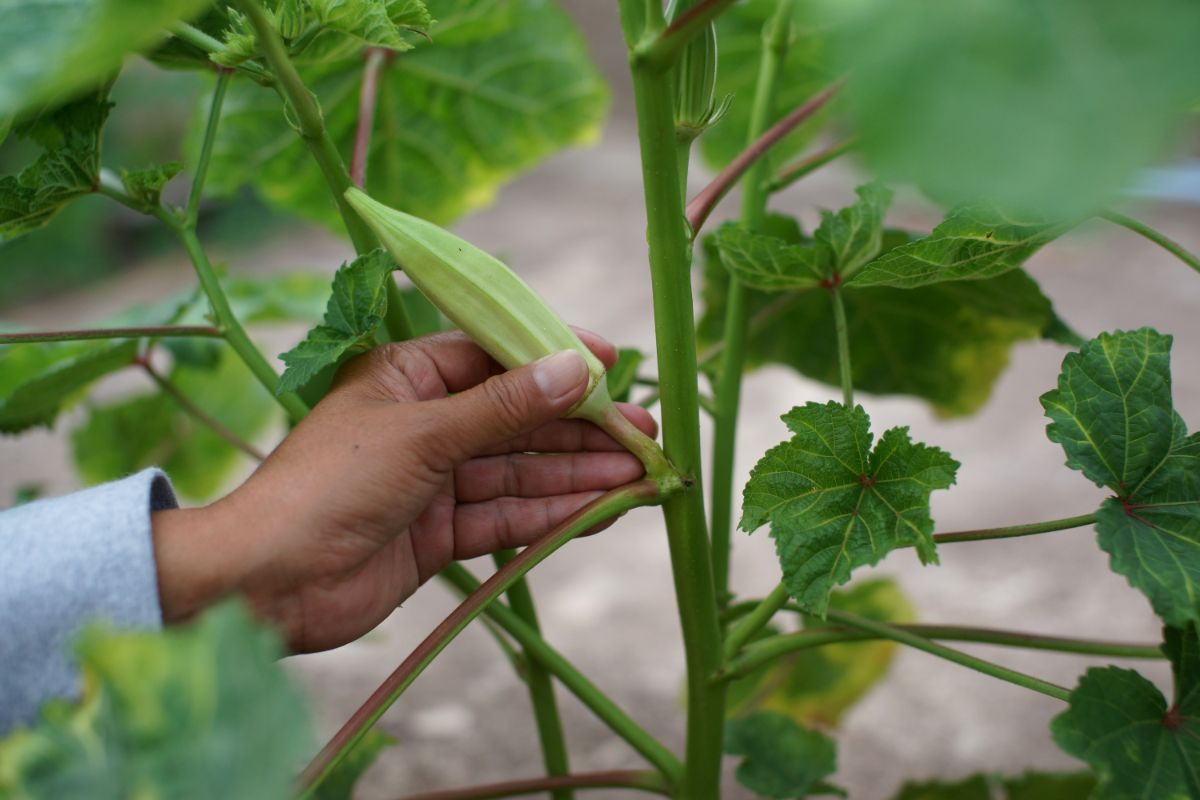
| Plant name: | Okra |
| Recommended growing season: | Spring through fall |
| Plants per square foot: | 1 |
Okra isn’t as commonly grown as some of the other plants on this list, although it is a staple ingredient in many cuisines. If you’d like to grow okra in your small garden, sow 1 plant per square.
Gardeners often struggle with woody or tough okra pods, but this happens when okra is left on the plant too long. For optimal texture and flavor, pick your okra regularly. Okra pods shouldn’t be left on the plant for more than a day or two, and they should be about 2 to 4” in length.
21. Corn

| Plant name: | Corn |
| Recommended growing season: | Spring through early fall |
| Plants per square foot: | 2 |
Corn is a large plant that requires a lot of fertilizer to grow properly, so it isn’t an obvious choice for square-foot gardens. You can, however, grow 2 corn plants per square foot. The tight spacing can help corn plants support each other and will produce better pollination rates than corn planted further apart.
If you choose to keep corn in your small garden, fertilize your corn several times throughout the growing season. It’s also important to locate your corn in an area of your garden where it won’t block out the light from lower-growing plants. For extra convenience, try sowing beans near your corn and allow the beans to use your cornstalks as natural support poles!
Summary
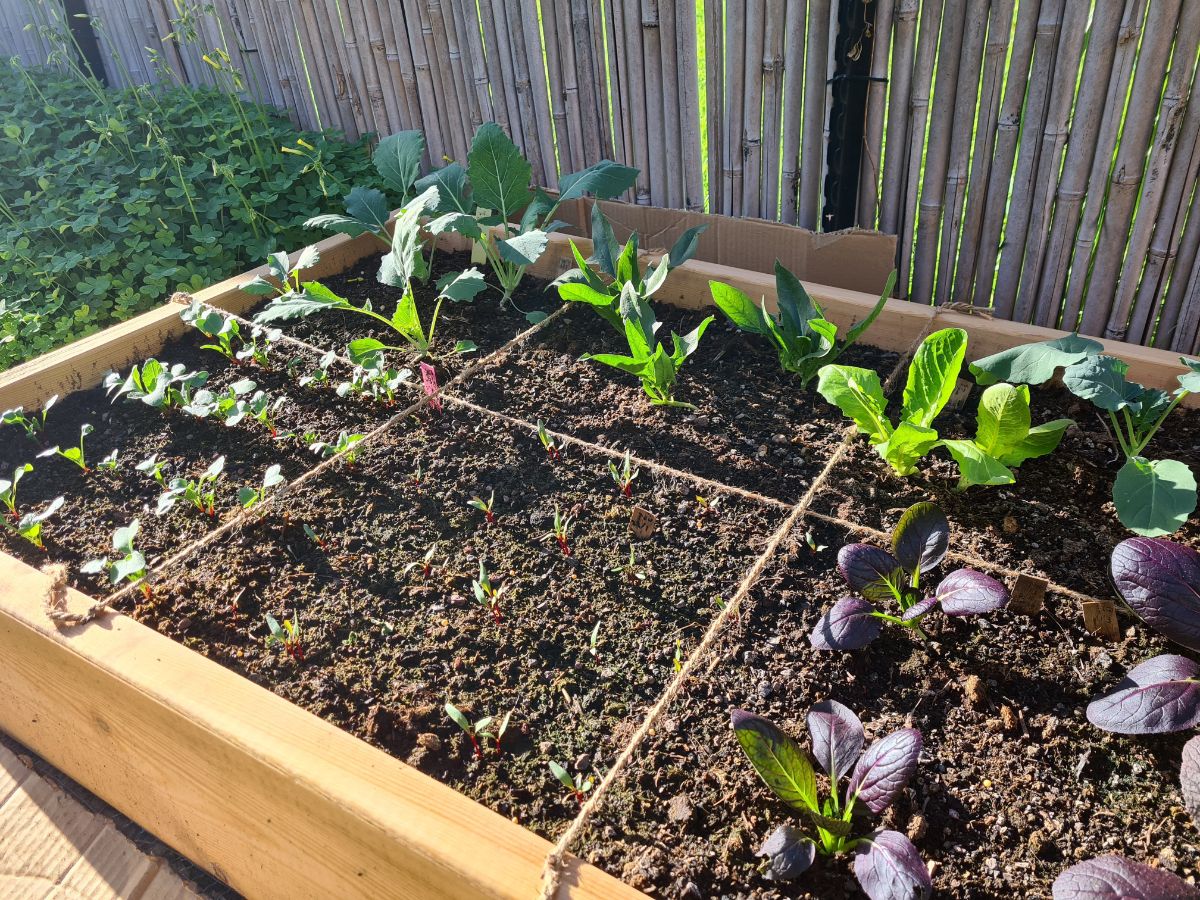
If you have a small backyard but want to grow lots of vegetables, keeping a square-foot garden can be an easy and effective solution. Many of the most common vegetables can be kept in these efficient structures, and plants will grow happily as long as they are properly spaced. Plus, if you want to boost your harvest yields even more, you can succession plant fast-growing veggies and make use of vertical spaces with trellising too!
Because square-foot gardens are so small, it’s important to fertilize your plants throughout the growing season. You can learn more about natural fertilizers here or read up on how to make your own compost with our easy composting guide.

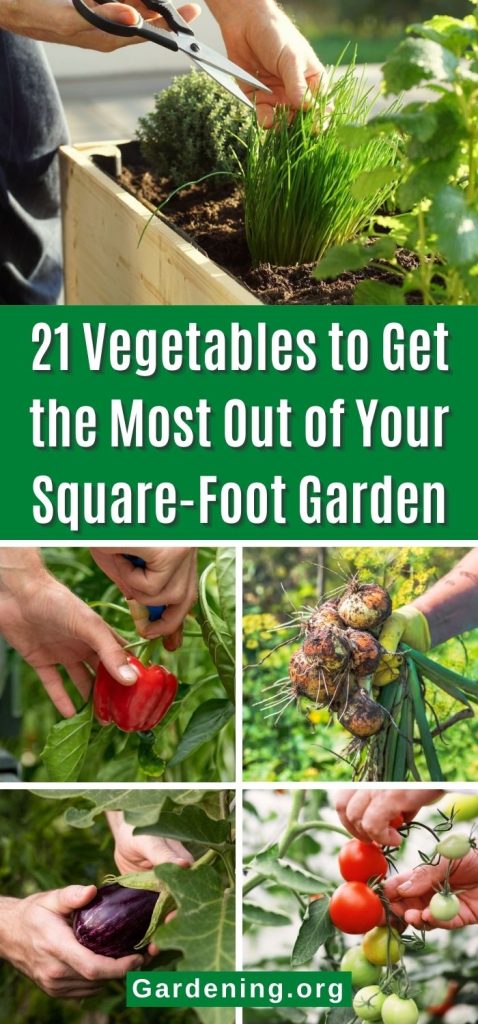
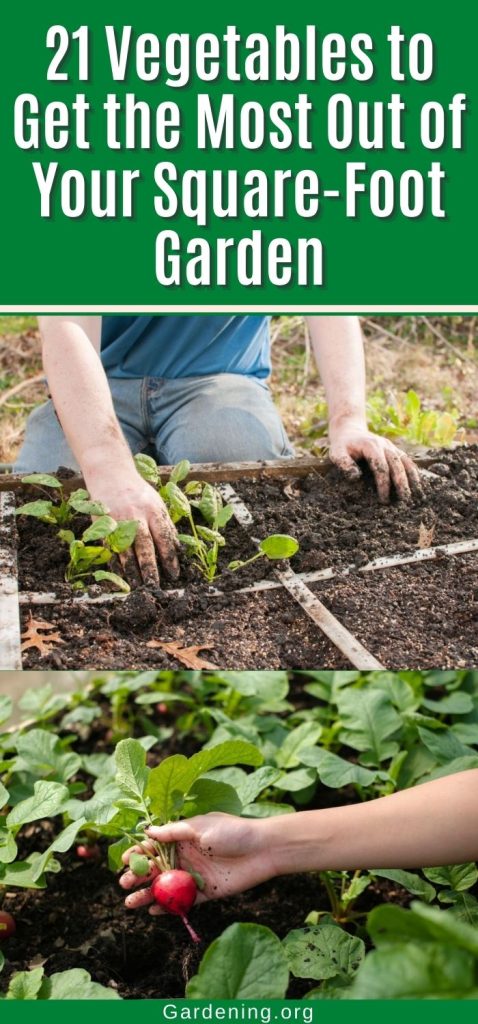
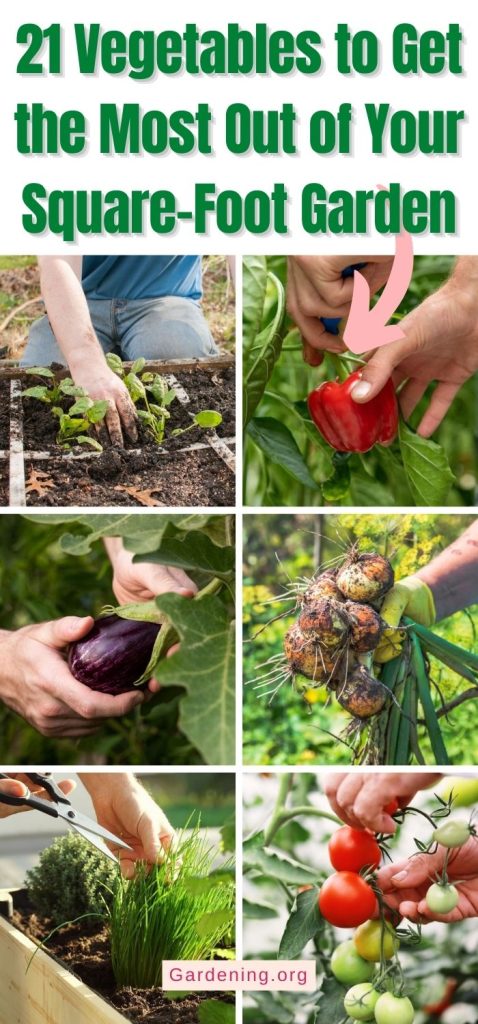
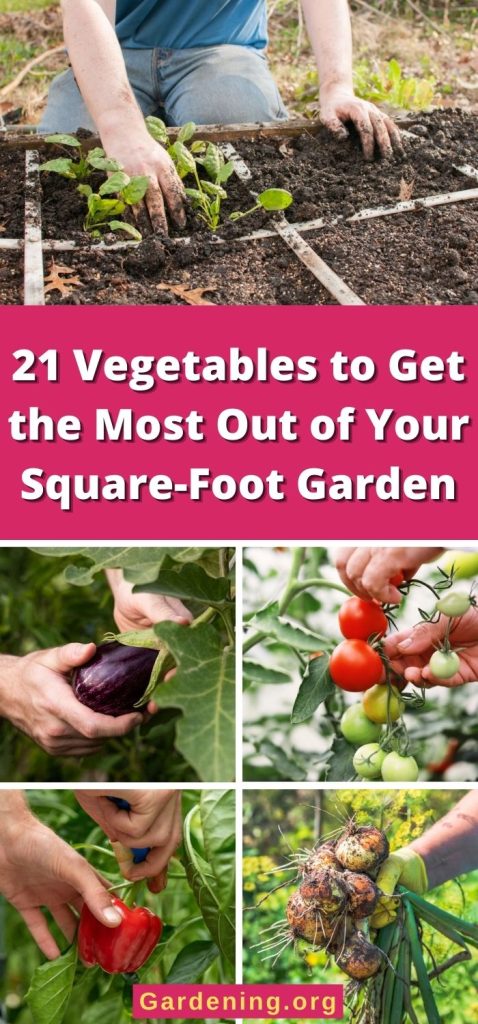


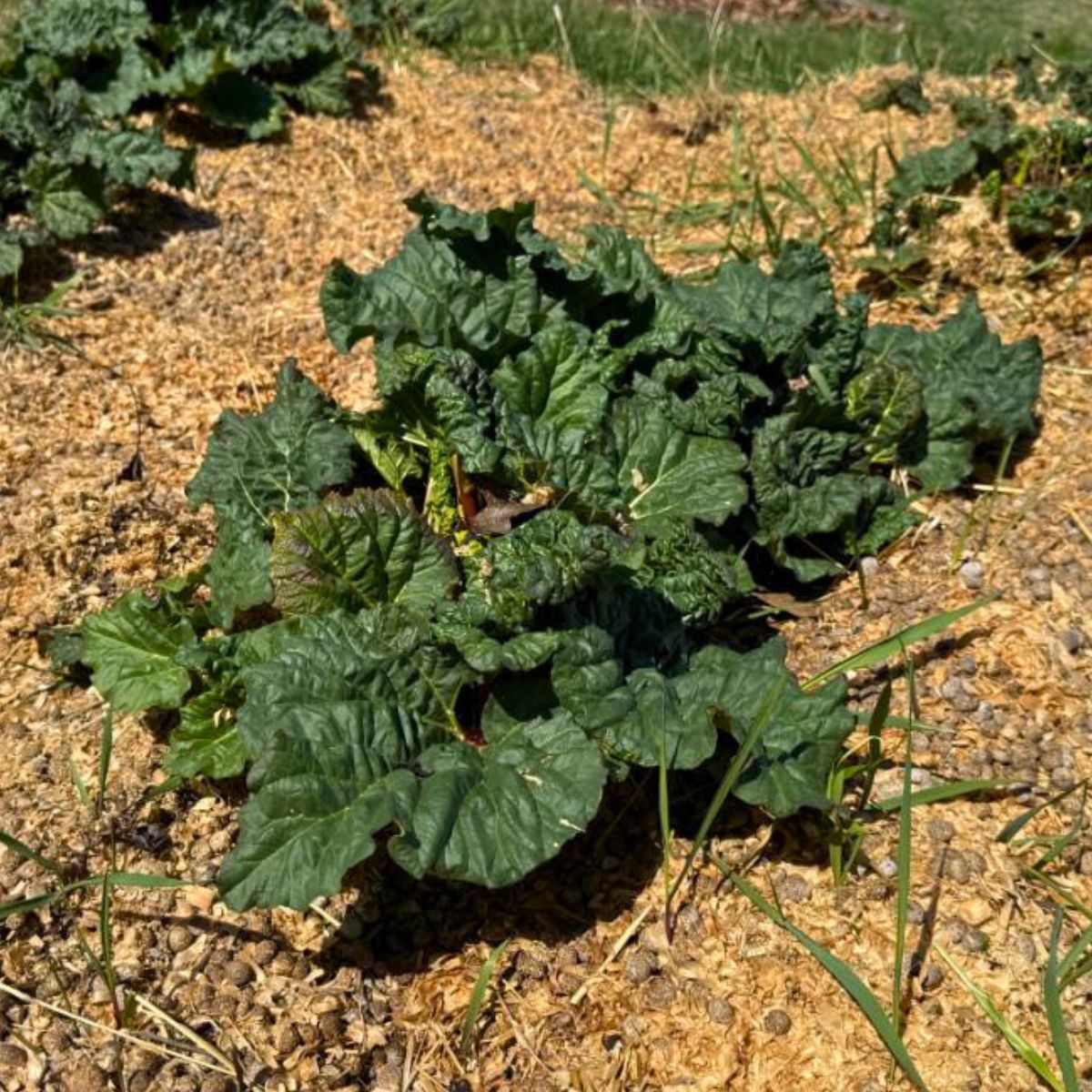

Leave a Reply